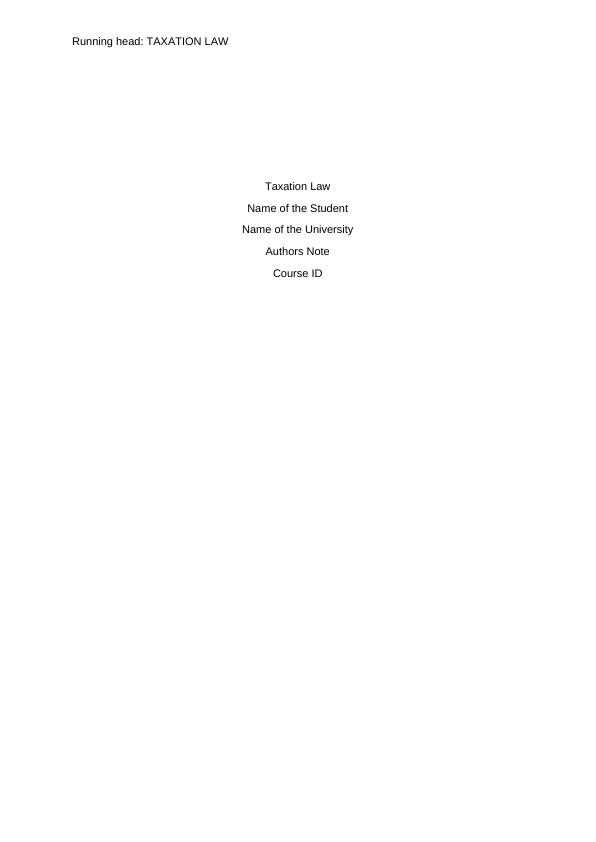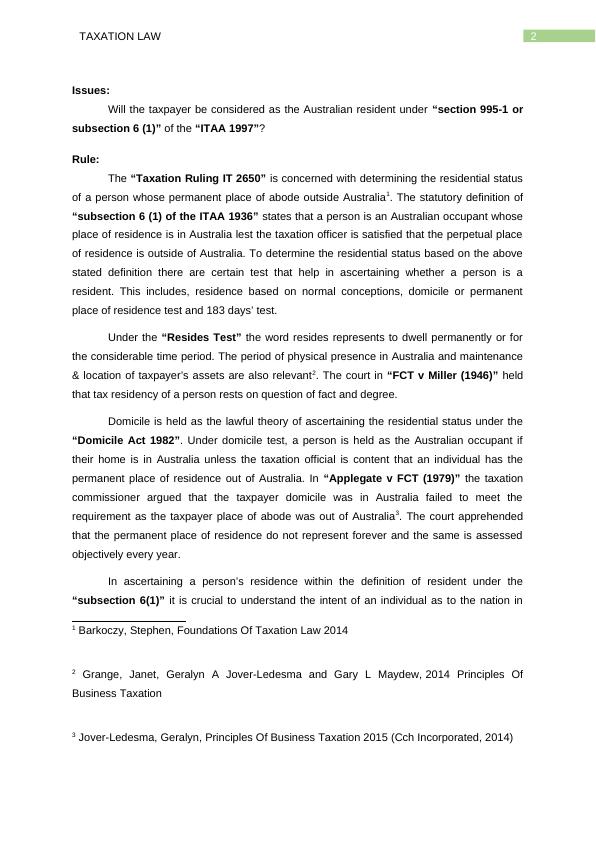Determining Tax Residency Status under ITAA 1997
Added on 2023-06-07
6 Pages1408 Words243 Views
End of preview
Want to access all the pages? Upload your documents or become a member.
Tax Case Study and Analysis
|18
|5298
|195
Determining Australian residency status under subsection 6(1) of ITAA 1997
|7
|1588
|210
Taxation Law: Determining Residential Status and Main Residence Exemption
|12
|2855
|105
Taxation Law: Residency Test and Capital Gains Tax
|7
|1425
|312
Taxation Law: Letter of Advice
|9
|1379
|21
Taxation Law
|8
|1124
|72



